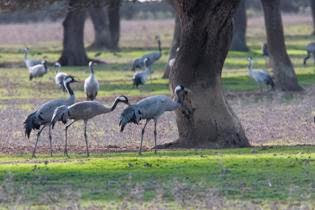Winter Atlasing

We are now in the third and final year of the Winter Atlas fieldwork in Spain (organised by SEO/BirdLife). It has been a real highlight of the winter for me. I am doing seven 10 km squares and visits to each entail about a six hour walk along paths or tracks, counting every single bird seen or heard and estimating whether it is within 25 metres of the path or not. Add to this a description of the habitat every fifteen minutes and you can imagine the amount of information that is being gathered. This then gets put on the computer and sent on-line to Madrid. I think that the results will be fascinating, giving us a picture of not just where different species occur in the winter across Spain, but also their relative abundance and habitat preferences. The planning is quite complicated. There is no point doing this type of survey work if it is raining, very windy or foggy...because this would create bias in the detectability of birds (they will be harder to count). I also avoid going out on
